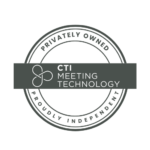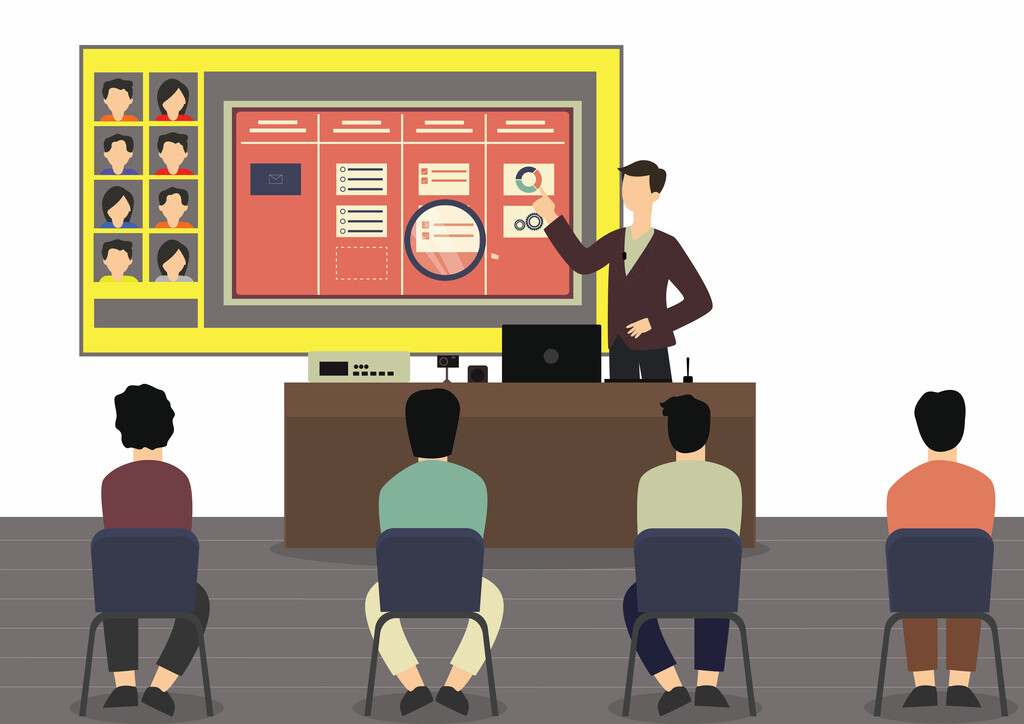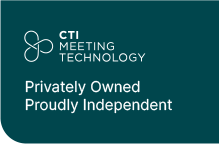Although onsite and virtual attendees want two very different experiences from a meeting, the right options for delivering content can bridge the difference.
With the likelihood that hybrid will be a requirement for most conferences in the foreseeable future, organizers are faced with the challenge of satisfying two types of attendees who appear to want something very different from their meeting experience.
While those wishing to return to physical settings talk about the need for live interaction with others in attendance, analytics show that those who got the most out of virtual meetings were less likely to experience sessions in real-time.
CTI recently held a webinar showing how the same content could be delivered in ways that solve both sides of the hybrid satisfaction equation while holding down costs in the process. Some of the insights and tips follow:
Giving the onsite attendee what they most want. A recent survey conducted for the International Congress and Convention Association (ICCA) found that “The need for meeting face-to-face has intensified.” Of those looking to return to onsite meetings, 70% want new contacts onsite; and 66% look for a “sense of community.” For organizers, this means that interaction is a “must” for practically all sessions. There should always be Q&A, but also, where appropriate, chat and polling.
This interaction does not require native apps. Solutions should permit onsite attendees to enter tiny URLs in their smartphones to bring up web apps to enter comments or questions and respond to polls. Also, consider providing onsite attendees with access to virtual content as well – so they no longer have to choose between two sessions of interest that may be scheduled at the same time and have the option to watch one later when it’s converted to video-on-demand.
Understanding the virtual power user and providing content the way they like it. Across all virtual meetings, CTI has discovered that 20% of attendees account for 75% of the content consumed.
We call this segment the Power Users. Rather than go to one place to sit through one livestream after another, they are active searchers who continually look for the sessions and presentations that most interest them. They prefer on-demand content that they can add to their Playlist tool to watch at their convenience.
For these users, organizers should strive to convert all livestream to on-demand before the day is done. Another option is to have sessions prerecorded – not just as backups but to make the content readily available for Power Users. Equally important is giving them access to individual presentations so they don’t have to view an entire session if they are only interested in one or some of the speakers.
Dealing with the different file types for onsite and virtual distribution. Once upon a time, the only file that a presenter needed was a PowerPoint that would be delivered live in a session room.
But now, for the same presentation, there could be an MP4 that would have video and audio for both backup and virtual access. Virtual attendees have also gotten used to viewing more than just a presentation.
They want links for handouts and supplementary materials that could be documents or videos. This all means building out the presenter’s portal with an upload link for each permitted file which will show the required size and file type.
The need for backups travel concerns creates uncertainty about presenters. One-third of Regular Users click banners, but so do 39% of Power Users – nearly double their typical percentage of attendees.
Industry sponsors and exhibitors looking to target dedicated researchers and influencers could reach the Power User with banners on high-traffic content pages like ePosters or on-demand sessions.
The keys for holding down hybrid costs while finding new sources of revenue. The analytics show that industry investments in networking lounges for sponsored/satellite sessions pay off in reaching both profiles—with the Power User more likely to watch the complete session and take advantage of clicking the added PDF and video resources that the lounge can provide. CTI’s new lounge option for Video Chat should prove a draw for Regular Users as well.
Low-cost, high-return opportunity for organizers—post-meeting access. CTI analytics show both profiles are interested in returning to the virtual site after the meeting—Power Users in particular.
The “long tail” phenomenon that’s so essential in e-commerce applies to virtual meetings. Although daily visits may not be as high as those during the meeting, over time, the total post-meeting visits can equal or exceed those of the meeting. Why not let the industry benefit too with post-meeting booths, lounges, and additional locations for banners?






